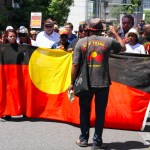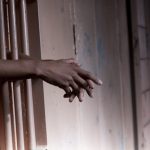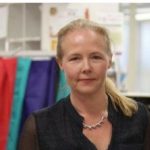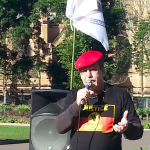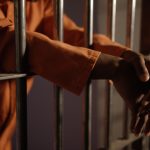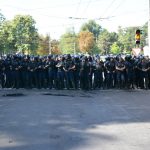Closing the Gap: An Interview with Ngalla Maya Founder Mervyn Eades
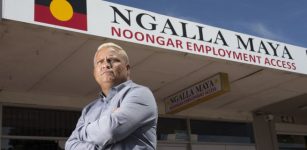
A non-profit mentoring program for young people leaving prison in WA is gaining national attention. Situated in the Perth suburb of Belmont, the Ngalla Maya program is in its third year of operation. And due to its success, it’s recently been granted federal government funding.
Ngalla Maya provides support and training to mainly Indigenous youth at the difficult time when they’re released from detention and reintegrating back into life on the outside. In its first two years of operation, the post-release program helped 140 former inmates into full-time employment.
The organisation guides both young men and women into training programs in a variety of industries and then onto employment. Ngalla Maya also provides culturally appropriate long-term support. The majority of their mentors are Aboriginal and Torres Strait Islander people.
The outcome-based funding will provide enough money to get 80 young people over the line and into full-time employment during the next two and a half years. And Ngalla Maya will provide the finances to help another 120 into a brighter future.
A lack of post-release support
Leaving prison is a difficult time for anybody. And First Nations peoples are particularly vulnerable. Researchers have found that in the days and weeks after release, Indigenous people are at an increased risk of death caused by substance use, preventable diseases and suicide.
And there’s a glaring lack of post-release support programs to see them through. A 2014 report outlined that intensive and coordinated care immediately after release provides benefits when it comes to reintegrating into society.
However, without that support many former inmates find themselves back inside. Around 78 percent of the more than 10,500 Aboriginal and Torres Strait Islander inmates have been in prison before. And one third have served at least five prior convictions.
Systemic racism
Indigenous incarceration is through the roof in this country. Aboriginal and Torres Strait Islander people are proportionally the most incarcerated people on the planet.
First Nations peoples now make up 27 percent of the nation’s adult prisoner population, despite only accounting for 2.8 percent of the overall population. And Indigenous young people make up 55 percent of the population in youth detention centres.
According to Australian Bureau of Statistics figures, the national incarceration rate is 208 inmates per 100,000 adults. In comparison, the Indigenous incarceration rate is astronomical. It sits at 2,346 prisoners per 100,000 Indigenous adults.
However, in the state of Western Australia the situation is even worse. The WA Indigenous incarceration rate is 3,997 inmates per 100,000 adults.
Opening doors
Mervyn Eades is the founder of the Ngalla Maya program. And he’s no stranger to what the young people in the program are going through. Eades spent close to two decades in and out of prison.
Mr Eades was also one of five claimants who refused to sign the Noongar native title agreement. A Federal Court case that he was a party to ruled that the agreement was invalid in February. “WA Inc, back in the 80s, has nothing on the Noongar land deal. It is so corrupt it’s not funny,” Eades said.
Sydney Criminal Lawyers® spoke to Mr Eades about how the Ngalla Maya program guides participants into employment, the injustices that his people have suffered under colonisation, and the legislation the federal government passed in June to reverse the outcome of the Federal Court win.
Firstly, what does the Ngalla Maya program actually involve?
Ongoing mentoring and support. The never let go approach. This is how we’ve structured it.
Before the boys come out of gaol, we go into the prisons. We have relationships within the prisons that let them know we have a program for boys and girls when they come out of the prison system.
Expression of Interest forms are left in all the prisons. We’ve got Noongar radio. On the Inside Out program, they talk about what we do.
So the boys and girls are fully aware of what we do through our visits to the prisons, as well as the Noongar radio broadcasting. And word-of-mouth is very strong for our people.
We let them know we have the program for them on re-entry. The prison sends the forms to us. And they come to us when they get out. Most of the boys come to us on the first week they get out of prison, because they want to change their lives.
We organise and structure training for them. Before we send them off to training companies, we do a week with the boys and we do cultural, work ready and money matters with them. We get men and women who have been in positions on the mine sites to come in, talk to them and tell them what it’s going to be like entering the workforce.
So we get them work ready. But, culture, identity and heritage is very strong too. To understand and know that they have belonging in this place.
Then we get them into the training in the following weeks. We let them know what is going to be expected from them: waking up early and being on time. We have a bus that takes them to training.
And we have understandings with the training groups we go through. I make sure there’s an understanding of the demographic these people will be training. They’re long-time unemployed and long-term incarceration. And they’re coming from backgrounds of unfortunate circumstances.
We let them know from an Aboriginal perspective that these boys and girls haven’t had it easy throughout most of their lives. And we’re talking about some boys that are 36-38 years old, and have done 20 years in gaol. In and out all their lives from juvenile all the way through to adult.
How necessary is a program like this? And how beneficial is it?
Not having that support out in the community. Not having the moral and mental support. The support that only our people can deliver. That’s been the biggest gap I’ve seen, because I’m an ex-offender myself.
One of the biggest gaps is boys coming out, re-entering into the community, and having nothing. No support to drive them into success.
In all our households, employment is one of the keys for our boys facing that reoffending and recidivism behaviour pattern. Earning money and feeling good about themselves goes through not only to them, but it goes through their whole household.
People can see someone who has been so dysfunctional for so long is changing and willing to make changes. Then that precedent is set in the family structure. And the big picture gets to the kids as well.
Having money to buy stuff that they’ve never had and to walk into a shop and buy stuff once they’re employed is huge.
The majority of Aboriginal and Torres Strait Islander inmates have been in prison before. What does this say about the Australian prison system? And why are Indigenous inmates returning in such large numbers?
They’re returning in such large numbers because of poverty. Impoverishment and not enough support in the community. It’s not so much the prisons. It’s the community and society.
What I have started to notice in a big way, all these mining companies and others ask for police background checks and criminal history. That’s a huge barrier. They’ve got all these hoops to jump, even just to get employed. It’s a joke. It’s more of a problem of society, than the prisons.
There’s a huge overrepresentation of Indigenous people in Australian correctional facilities. And WA has the highest rate of all. What’s leading to this extreme set of circumstances?
WA is the mother of all gaolers. At the moment, 84 percent of our children are locked up. They’re the highest incarcerated Indigenous children in the world – not only in Australia – in the world.
Our women are locked up at 60 percent. And our men are locked up at 50 percent in Western Australia- on a population of 3 percent or less. This is a disgrace.
What is this saying about Australia? Overall, systemic and departmental racism exists. And the three-strike laws are killing our people. It’s putting them into the prison system. A lot of these laws are directed towards my people I feel.
And right now, what has to happen in order to stop this overrepresentation of the continent’s First Peoples in prison?
Create options and opportunities throughout our communities for our boys and girls. We’ve got boys and girls that go to school, finish year twelve and never get a job in their community. The shire councils, everyone, has got to come on board with this.
If you walk into any business or shopping centre in Western Australia, you will not be served by one of my First Nations people. Because they’re not there. They’re not giving them the opportunity that they should be given. The biggest breakdown is lack of opportunities.
When we talk about boys and girls going into prisons, and coming out of prisons, a lot of them go to prison homeless and come out homeless.
All the departments need to have a good look at themselves, and start addressing these issues.
On a different subject Mervyn, you were one of five claimants who refused to sign the Noongar native title agreement, which was the biggest agreement of its type in Australian history. It comprised of six Indigenous land use agreements (ILUAs), was worth $1.3 billion dollars, and covered an area of 200,000 square kilometres in WA’s southwest.
In your opinion, what was the problem with the agreement?
That native title agreement took away our rights to country. We’ve been battered and bashed in our country, especially our Noongar people.
The boats first landed in Albany on Noongar country. And they just smashed our people. They took away our language. It was law that we could not speak our language. Law that we could not practice ceremony. Law that we could not be in town sites. Law that we did not have citizenship rights. We were not a part of society.
It’s happened all the way from back then. And they never stopped.
Our people were rounded up from the Pilbara, the Kimberley and the Goldfields. All shackled to each other and brought down here to Perth to Rottnest never to go home again.
This has been generational.
On February 2 this year, the federal court ruled that the Noongar native title agreement was invalid, as five of the ILUAs could not be registered as they were not signed by all claimants. This reversed the 2010 Bygrave decision that ruled it was not necessary for all native title claimants to sign an ILUA.
How did you feel about the outcome of the case? How significant was it?
When we talk about Indigenous land use agreements on Noongar country, it takes away all rights for our people to ever be given any royalties from mining. We’re not a third party to any of that. Our Noongar people have never had royalties on Noongar country ever. We’ve never received royalties.
We’re not to have any seat at the table for any mining that’s done on our land. And something that is huge and so sad is that part of our ILUA was never to contest past and future acts. So they can make laws upon our people in the future. Or past acts committed against our people, our people can never contest.
Now that was inside of our ILUA. That is legalising future genocide as far as I’m concerned – to take away a people’s rights.
Look at what the government did to overrule the Federal Court full bench in Western Australia. The three judges – North, Mortimer and Barker -are some of the most senior Federal Court judges in Western Australia. They did not only undermine our rights to native title. They also undermined their own law.
They took it to federal parliament to change the legislation. To suit who? To suit themselves not my people.
You’re talking about the legislation the federal parliament passed on June 14 that restored the Bygrave decision so that it’s not necessary for all traditional owners to sign off on an agreement in order for it to proceed.
The Bygrave decision means one person amongst 40,000 people could authorise something. As far as I’m concerned, the Bygrave law is so wrong it’s not funny. It was proven by the High Court and the Federal Court of Western Australia.
The effect that it will have on all the people around the country is that it legalised dispossession. The Australian government has legalised the dispossession of our people’s rights to land with the native title bill.
So the new legislation reversed the decision of your Federal Court case?
It did. And we fought for two years. We fought with no money, no backing and no support from the WA government or our land council. Because we fought against something that they were trying to push through. It was so illegal it was not funny.
They only used 900 of our Noongar people out of 40,000 to authorise it. Five senior elders refused to sign it. And those five senior elders that refused represented thousands of people. They represented their children and their children’s children. It wasn’t just five single people who said we don’t want it. They were representing thousands of people.
And lastly, it’s been 229 years since the British began their occupation of this continent. First Nations peoples today are amongst the most incarcerated people on earth, the rates of suicide for Indigenous people are amongst the highest in the world, and large numbers of Aboriginal and Torres Strait Islander children continue to be forcibly removed from their families.
Where do we go to from here? What has to happen in order for significant improvements to be made to the lives of First Nations peoples on this continent?
We need equality of life. We need a treaty in some form – something that might bring us equality and give us a piece of the pie.
This country was invaded 229 years ago. If they talk about equality, let my people have 7 or 8 percent GDP forever to take away the impoverishment. Our people are still living in tin sheds through the Goldfields and through the Kimberley and the Pilbara. There’s no running water. Some places don’t have electricity.
Take away the impoverishment and give us our rightful place as sovereign people. We’ve never ceded our sovereignty. We were invaded. We’ve never done a treaty or an agreement with these people.
And as we’re seeing now with this constitutional stuff they are talking about – how legal were these people to even govern over our people for all this time?
I’m going to have a talk with Mr Stewart Levitt. I’ll be yarning with him in regards to a lawsuit against the government for the 1905 Native Welfare Act and the White Australia Policy, because this was all legalised by an illegal entity.
Mervyn thanks very much for taking the time out to speak with us today.
Not a problem.


